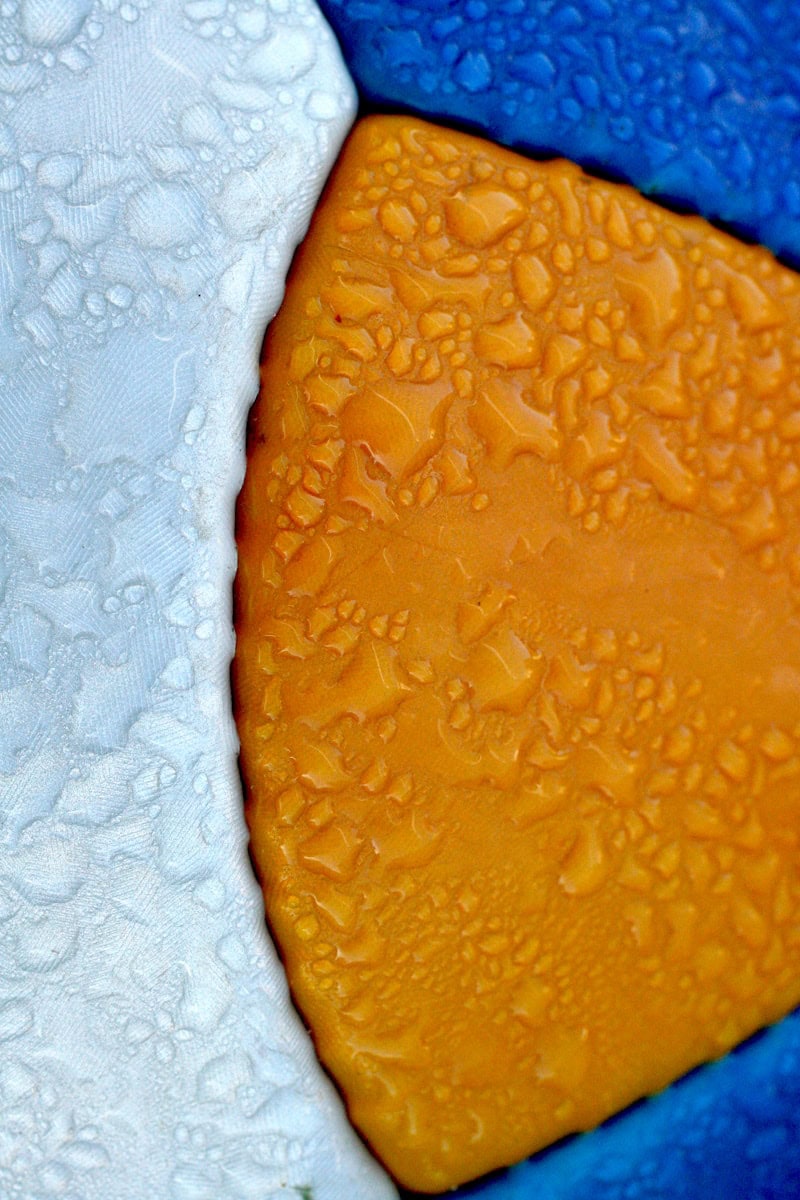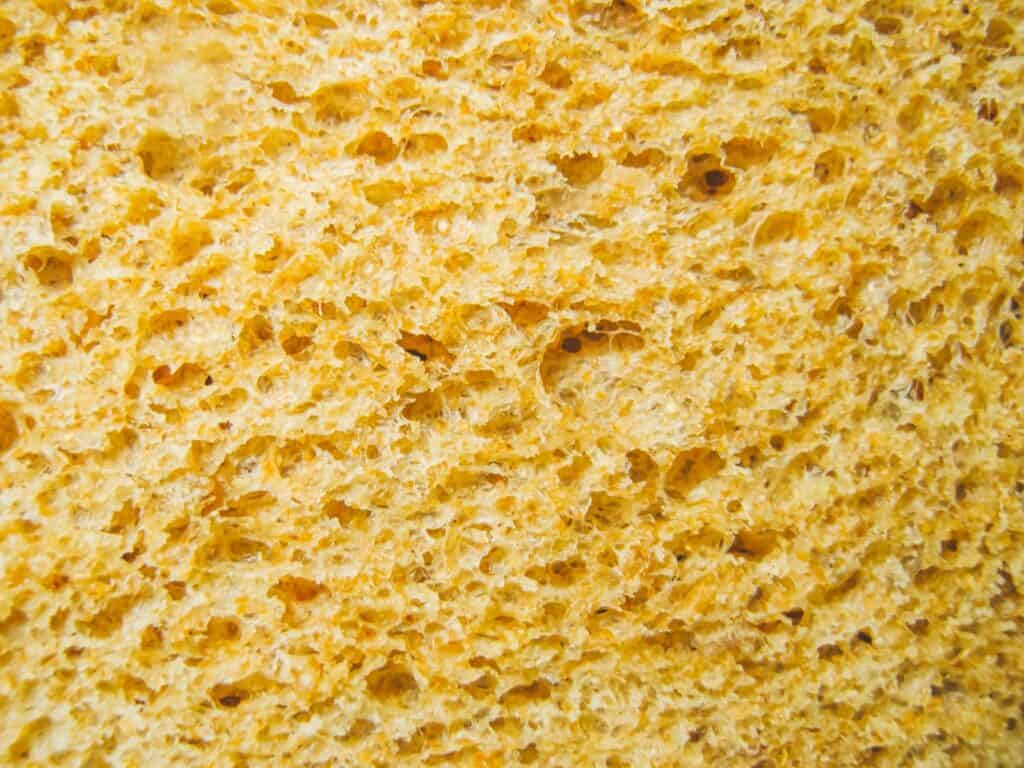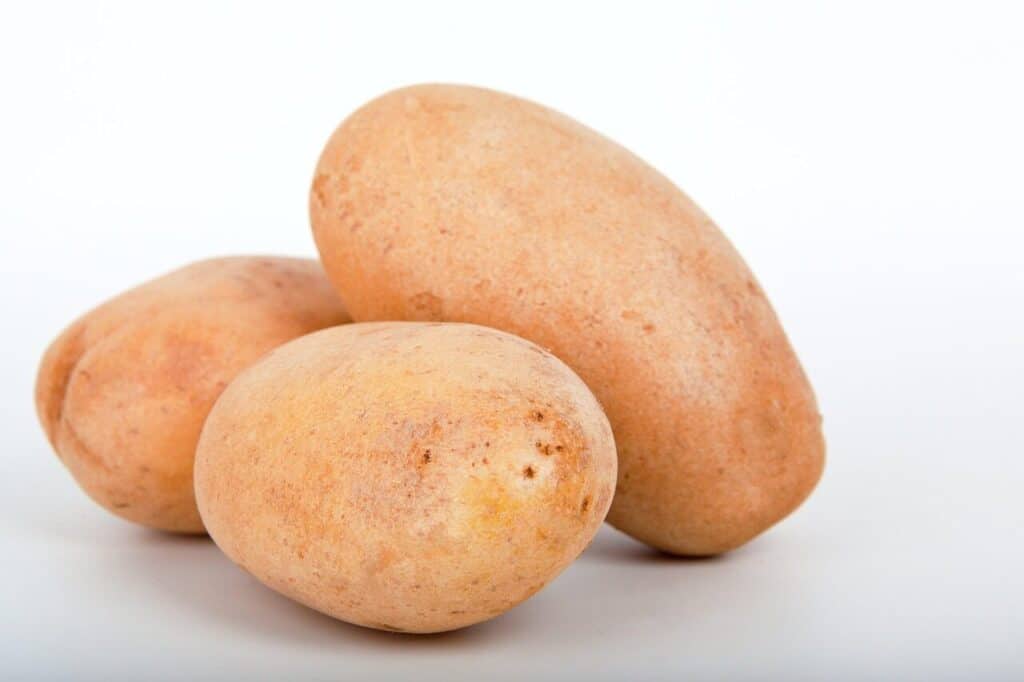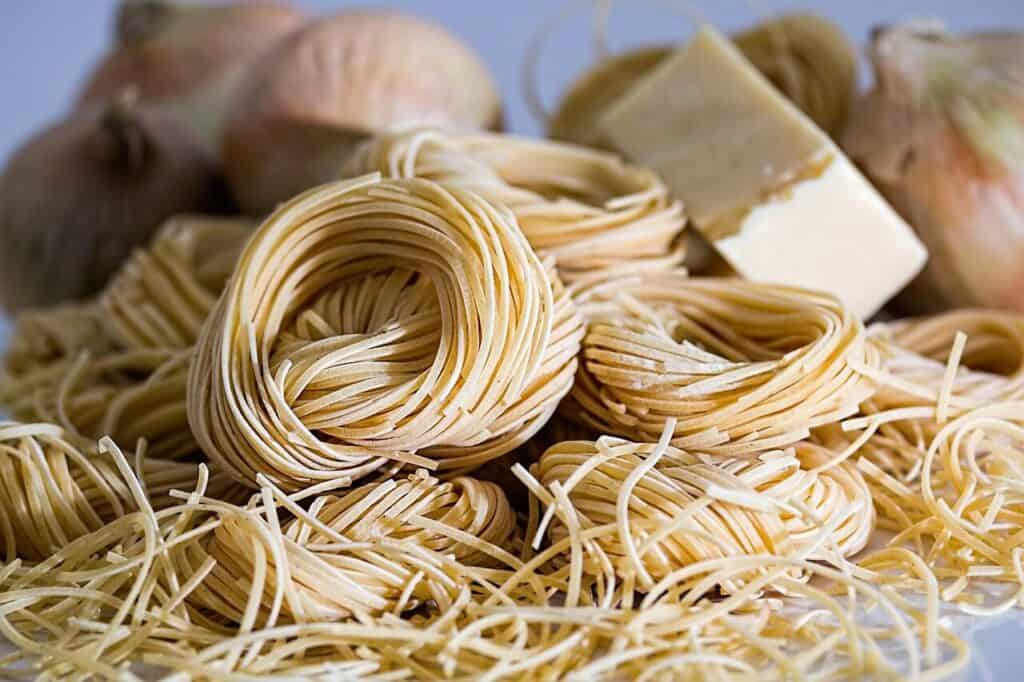Как работают системы формования крахмала: Техническое руководство
Крахмальные формовочные системы составляют основу промышленного производства желированных конфет. К ним относятся жевательные резинки, желе, помадки и лакричные конфеты. Процесс происходит на производственной линии под названием “Mogul”. Он необходим для производства стабильных продуктов в больших масштабах.
Этот анализ выходит за рамки базовых обзоров. Мы стремимся изучить инженерные, химические и физические принципы, которые управляют формованием крахмала.
Мы разберем основные части системы. Мы изучим, как крахмальный слой работает в качестве материала. Мы проанализируем точную механику нанесения конфетной смеси. Мы подробно рассмотрим тепловую науку сушки. Наконец, мы предоставим основу для управления процессом и устранения проблем. Это руководство предназначено для технических специалистов.
Анатомия современной системы
Система формования крахмала - это не одна машина. Это сложная цепочка автоматизированных подсистем, работающих вместе. Каждая часть выполняет определенную работу, перемещая продукт из жидкого состояния в готовое твердое.
Понимание технологического процесса - это первый шаг к освоению системы. Он отображает путь продукта от пустого лотка до упаковки. конфеты.
Технологический процесс
Последовательность остается стандартной для большинства современных систем. Это обеспечивает повторяемость и контроль производства.
- Обработка и заполнение лотков: Пустой лотки с крахмалом автоматически поступают на линию начало.
- Печать/впечатление: Формы вдавливаются в выровненные, кондиционированные слои крахмала.
- Депонирование: Жидкая конфетная смесь аккуратно отсаживается в каждый крахмальный оттиск.
- Штабелирование: Заполненные поддоны укладываются на большие поддоны для подготовки к отверждению.
- Кочегарить (отвердевать): Поддоны перемещаются в камеры с регулируемым климатом для сушки в заданных условиях.
- Дестакинг: Затвердевшие лотки возвращаются из пекарни на линию Mogul.
- Снятие и очистка: Готовые продукты отделяются от крахмала. Оставшийся крахмал удаляется с поверхностей.
- Крахмальный кондиционер: Использованный крахмал просеивают, сушат и охлаждают для повторного использования в системе.
Ключевые подсистемы
На каждом этапе производства используется специализированное оборудование. Инженерные решения, лежащие в основе каждой подсистемы, определяют общую эффективность и качество линии.
Компонент | Основная техническая функция | Ключевой инженерный принцип(ы) |
Крахмальный бак | Наполняет лотки кондиционированным крахмалом и разравнивает его. | Гравитационная подача, механическая вибрация для равномерной плотности, выравнивание лопастей. |
Плата принтера | Создает слепки (формы) в крахмальном слое. | Механическое прессование, принудительное вытеснение. Дизайн форм (гипсовых, металлических, пластиковых) диктует форму. |
Вкладчик | Впрыскивает точный объем жидкой массы в каждый оттиск. | Объемное перемещение (поршневые или роторные насосы), управление серводвигателем для обеспечения точности, гидродинамика. |
Штабелер/Погрузчик | Укладывает заполненные поддоны на паллеты для транспортировки на полимеризацию. | Пневматическая или сервоприводная автоматика, механические конвейеры. |
Печная камера | Сушит продукт, контролируя температуру и влажность. | Термодинамика, теплопередача (конвекция), массоперенос (гигроскопичность, диффузия). |
Тумблер/паяльник | Отделяет готовый продукт от крахмала. | Инверсия, механическое галтование, вибрация, струи сжатого воздуха для очистки. |
Кондиционер для крахмала | Сушит, охлаждает и просеивает использованный крахмал для повторного использования. | Сушка в кипящем или роторном слое, теплообмен, многоярусное просеивание для классификации частиц. |
Наука о крахмальной кровати
Крахмал - это не просто пассивная форма. Это активный материал, обладающий особыми свойствами, которые играют важную роль во всем процессе. Его роль влияет на текстуру, внешний вид и стабильность конечного продукта множеством способов.
Понимание принципов работы крахмального слоя очень важно для технологов, оптимизирующих процесс производство и предотвращение ухудшения качества проблемы.
Физико-химическое обоснование
Крахмал стал промышленным стандартом по нескольким техническим причинам.
Его основная функция заключается в гигроскопичности. Гранулы крахмала легко впитывают влагу из попавшей в них жидкости. Это способствует желированию и застыванию гидроколлоидов, таких как желатин, пектин или модифицированный крахмал.
Гранулированная природа крахмала обеспечивает отличную структурную целостность. Он удерживает тонко проработанные оттиски с печатной платы, не разрушаясь. Это позволяет создавать изделия сложной формы.
Он также обеспечивает тепловую изоляцию. Это позволяет горячей осажденной смеси охлаждаться с контролируемой скоростью. Правильное формирование гелевой структуры требует такого контроля.
Наконец, возможность повторного использования делает систему экономически выгодной. Крахмал можно сушить, просеивать и возвращать в процесс. Это делает крахмальное формование высокоэффективным и замкнутым.
Важнейшие свойства крахмала
Некоторые свойства крахмала требуют тщательного контроля. Плохое управление этими переменными приводит к нестабильности процесса и дефектам продукции.
- Содержание влаги: Это самая важная переменная. Идеальная влажность крахмала для формования находится в диапазоне от 6% до 9%. Слишком сухой крахмал (ниже 6%) поглощает влагу слишком интенсивно. Это приводит к плохому оттиску формы и потенциальному затвердеванию корпуса или растрескиванию поверхности. Слишком влажный крахмал (выше 9%) обладает пониженной способностью поглощать влагу. Это приводит к медленному или неполному высыханию, плохой проработке формы и липкости конечных продуктов.
- Распределение частиц по размерам (PSD): Более мелкие частицы позволяют получать более четкие и детальные оттиски. Однако избыток мелких частиц создает значительные проблемы с пылью и ухудшает текучесть крахмала в системе.
- Насыпная плотность: Постоянство насыпной плотности в каждом лотке имеет решающее значение. Различия в плотности приводят к неравномерной сушке. Некоторые участки продукта контактируют с большим или меньшим количеством крахмала. Это также может привести к деформации форм под весом осадка.
- Температура: Крахмал, возвращающийся после кондиционирования, должен быть достаточно охлажден. Горячий крахмал обладает пониженной влагоудерживающей способностью. Это может привести к преждевременному застыванию или “шкурению” на поверхности осажденной жидкости, нарушая правильное формирование геля.
Сравнительный анализ
Наиболее широко используется нативный кукурузный крахмал. Другие крахмалы обладают уникальными свойствами, которые могут быть полезны в конкретных областях применения. Выбор крахмала является важным моментом при разработке рецептуры и технологического процесса.
Тип крахмала | Основные характеристики | Производительность формовки | Типичный пример использования |
Кукурузный крахмал (маис) | Маленькие, многоугольные гранулы. Хорошая текучесть. Промышленный стандарт. | Отличная детализация оттиска, хороший выпуск продукции, экономичность. | Универсальное средство для большинства жевательных резинок, желе и помадок. |
Пшеничный крахмал | Бимодальные (крупные и мелкие) гранулы. Высокое содержание белка/клейковины. | Может вызвать проблемы с потоком и требует более интенсивного просеивания. | Реже встречается из-за проблем с глютеном (аллергеном) и переработкой. |
Картофельный крахмал | Крупные, овальные гранулы. Высокая вязкость при нагревании. | Обеспечивает очень гладкую поверхность изделий, но может не так хорошо удерживать мелкие детали. | Нишевые применения, где требуется очень гладкая текстура. |
Крахмал тапиоки | Сферические, усеченные гранулы. Низкая температура желатинизации. | Хорошо подходит для гладких оттисков, но может быть более хрупким. | Используется в некоторых специальных или “чистых” рецептурах. |
Процесс снятия показаний
Депозитор - это сердце крахмальной формовочной системы. Здесь жидкая конфетная смесь превращается в дискретные блоки с точным весом и формой. На этом этапе сложным образом сочетаются машиностроение и гидродинамика.
Точность и повторяемость дозаторов напрямую определяют постоянство веса конечного продукта. Это критически важный параметр контроля качества и затрат.
Насосные технологии Depositor
В современных депозиторах используются высокоточные насосы, обеспечивающие объемную точность.
Наиболее распространены депозиторы с поршневым насосом. Механизм включает в себя поршень, который втягивает точно контролируемый объем жидкости в цилиндр при движении вверх. Затем он выбрасывает жидкость через форсунку в крахмальный отпечаток при движении вниз. Этот метод объемного вытеснения чрезвычайно точен. Он адаптируется к широкому диапазону вязкости продукта.
Еще одной технологией являются депозиторы с вращающимися клапанами. В этих системах используются вращающиеся клапаны с полостями, которые забирают жидкость из бункера и передают ее на форсунки. Такая конструкция часто позволяет выполнять непрерывные операции осаждения. Она также подходит для определенных типов масс, для которых не подходят поршневые насосы.
Жидкостная динамика массы
Физические свойства жидкой массы так же важны, как и механическая точность депонирующего устройства.
- Вязкость: Это самое важное свойство жидкости. Вязкость должна находиться в узких пределах. Слишком высокая вязкость затрудняет перекачивание массы. Это приводит к неточному взвешиванию и чрезмерному напряжению оборудования. Слишком низкая вязкость приводит к тому, что отложенная жидкость растекается в форме, теряя заданную форму.
- Температура: Температура оказывает значительное влияние на вязкость. Она должна точно контролироваться во всем бункере и осаждающей головке. Даже незначительные колебания температуры вызывают изменения вязкости, что приводит к неравномерному весу отложений.
- Содержание твердых веществ (Brix): Концентрация растворенных твердых веществ влияет как на вязкость, так и на необходимое время хранения. Более высокие уровни Brix обычно означают более высокую вязкость и более короткие циклы сушки.
- “Хвост”: Это распространенная производственная проблема тонкие нити продукта, остающиеся на форсунках после завершения нанесения. Это портит внешний вид продукта. Причины обычно включают неправильную вязкость, неправильную конструкцию форсунок или скорость отключения депонирующего устройства, не оптимизированную для свойств жидкости.
Контроль процессов и устранение неисправностей
Достижение высокой эффективности и стабильного качества в системах формования крахмала требует тщательного контроля процесса. Это предполагает определение критических параметров, их тщательный мониторинг и понимание того, как устранить отклонения.
В этом разделе представлена практическая основа для оптимизации процесса. Он переводит техническую теорию в практические решения общих производственных задач.
Критические контрольные точки
Эффективное управление процессом фокусируется на ключевых переменных, оказывающих наибольшее влияние на конечный продукт.
- Состояние крахмала: Содержание влаги и температура крахмала, поступающего в крахмальный бак.
- Депонирование: Точность определения температуры, вязкости и веса осажденной массы.
- Окружающая среда: Профили температуры и относительной влажности в камерах отверждения в течение всего времени хранения.
- Готовый продукт: Конечная активность воды (a_w) и текстурные свойства расформованного продукта.
Руководство по оптимизации параметров
Понимание причинно-следственных связей между параметрами процесса и результатами производства очень важно для инженеров и операторов. Следующая таблица служит справочником по технической оптимизации.
Параметр | Оптимальный диапазон (типичный) | Воздействие при слишком низком уровне | Последствия при слишком высоком уровне |
Влажность крахмала | 6 – 9% | Плохой оттиск формы; растрескивание изделия. | Плохое определение формы; медленное высыхание; липкий продукт. |
Температура нанесения | Варьируется в зависимости от рецепта (например, 80-95°C) | Повышение вязкости; образование хвостов; несоответствие веса. | Снижение вязкости; потеря формы; проблемы с предварительным желированием. |
Температура распаривания | Варьируется (например, 25-70°C) | Неэффективная/медленная сушка; возможность размножения микроорганизмов. | Упрочнение корпуса (образуется кожица, задерживающая влагу); деформация продукта. |
Повышенная влажность | Варьируется (например, 20-50% RH) | Продукт высыхает слишком быстро, что приводит к растрескиванию или образованию твердой оболочки. | Сушка затруднена; продукт остается липким и влажным. |
Скорость работы вкладчика | Зависит от машины/продукта | Низкая пропускная способность. | Это может привести к разбрызгиванию, неточному взвешиванию или неправильному размещению. |
Устранение технических неполадок
Здесь мы рассмотрим распространенные производственные проблемы с инженерной точки зрения.
- Проблема: Изделия “потеют” (синерезис) или липнут после распалубки.
- Техническая причина: Это указывает на слишком высокую конечную водную активность продукта (a_w). Или он не находится в равновесии с влажностью окружающей среды. Первопричиной, как правило, является недостаточное время выдержки или неправильные настройки температуры и влажности в камере отверждения. Это препятствует адекватному удалению влаги.
- Решение: Сначала проверьте параметры цикла пропаривания в соответствии с техническими характеристиками продукта. Измерьте конечный a_w с помощью измерителя активности воды, чтобы определить количественные отклонения. Соответствующим образом отрегулируйте время, температуру или влажность. Также убедитесь, что влажность входящего крахмала находится в диапазоне 6-9%. Влажный крахмал не может эффективно поглощать влагу.
- Проблема: Несоответствие веса продуктов на лотке.
- Техническая причина: Колебания массы часто связаны с колебаниями вязкости в бункере депонирующего устройства. Это может быть следствием непостоянного нагрева, создающего горячие и холодные участки в массе. Другими причинами могут быть пузырьки воздуха, попавшие в массу, или механический износ поршней, форсунок или уплотнений депонирующего устройства.
- Решение: Проверьте равномерность температуры во всем бункере и подающих трубах с помощью инфракрасного термометра. Если есть подозрения на наличие воздушных пузырьков, проверьте процесс смешивания или рассмотрите возможность применения мер по деаэрации. Составьте график профилактического обслуживания для регулярного осмотра и замены уплотнений и поршней насоса депонирующего устройства.
- Проблема: “Затвердение корпуса” - твердая внешняя оболочка с жидким или слишком мягким центром.
- Техническая причина: Этот дефект возникает, когда скорость испарения влаги с поверхности изделия значительно превышает скорость миграции влаги изнутри на поверхность. Он возникает в условиях чрезмерно высокой температуры или чрезмерно низкой относительной влажности. Поверхность быстро высыхает и образует непроницаемую оболочку, удерживающую внутреннюю влагу.
- Решение: Измените профиль стерилизации. Понизьте начальную температуру провяливания и/или увеличьте относительную влажность в начале цикла. Это создает более мягкие градиенты сушки, позволяя влаге мигрировать от сердцевины к поверхности до образования кожицы. Это обеспечивает равномерную сушку всего продукта.
Постобработка и кондиционирование
Процесс не заканчивается, когда продукция выходит из камеры запаривания. Заключительные этапы распалубки, очистки и кондиционирования крахмала имеют решающее значение для отделки продукции и обеспечения долгосрочной эффективности и гигиены системы.
Такое “замыкание цикла” жизненно важно для контроля затрат и безопасности продуктов питания.
Разборка и очистка
После затвердевания лотки укладываются в штабеля и поступают на участок распалубки. Здесь лотки переворачиваются на барабанах или виброситах.
Механическое воздействие отделяет твердые кондитерские изделия от рыхлого крахмала. Оставшийся крахмал, прилипший к поверхности продукта, удаляется с помощью мягких вращающихся щеток и направленных струй отфильтрованного воздуха высокого давления.
Петля переработки крахмала
Для того чтобы системы формования крахмала были экономически выгодны и устойчивы в эксплуатации, большая часть крахмала должна быть восстановлена, реконструирована и использована повторно.
- Просеивание: Крахмал из депульпатора проходит через многоярусные сита. Эти сита удаляют мелкие фрагменты продукта, хвосты или крупные агломераты крахмала. Таким образом, только чистый крахмал попадает на следующий этап.
- Сушка/охлаждение: Затем просеянный крахмал поступает в сушилку или плющилку крахмала. В этом устройстве используется контролируемое тепло (часто в псевдоожиженном слое или вращающемся барабане) для снижения влажности крахмала до заданного рабочего диапазона (например, 6-9%). Затем крахмал охлаждается до нужной температуры перед транспортировкой обратно в крахмальный бак, чтобы снова начать цикл.
- Гигиена: Этот этап кондиционирования необходим не только для контроля процесса. Это критически важная мера обеспечения безопасности пищевых продуктов. Правильная сушка крахмала предотвращает возможный рост микроорганизмов в циркулирующем крахмале. Это позволяет сохранить гигиеническую целостность всей системы.
Заключение: Обобщение и перспективы
Система формования крахмала демонстрирует точное проектирование, в котором сходятся сразу несколько научных дисциплин. Успешная работа зависит от владения тремя основными принципами.
Во-первых, крахмальный слой должен рассматриваться как инженерный материал. Его физико-химические свойства, такие как содержание влаги и размер частиц, нуждаются в строгом контроле. Во-вторых, отсадочная машина - это прецизионная механическая система, в которой пересекаются гидродинамика и объемная точность, определяющие продукт. В-третьих, процесс отсадки - это сложный процесс термодинамики и массопереноса, определяющий конечную текстуру и стабильность кондитерского изделия.
Несмотря на то, что основополагающие принципы формования крахмала разработаны уже более ста лет назад, технологии продолжают развиваться. Мы видим четкую траекторию к большему контролю, эффективности и интеграции данных.
- Будущие тенденции в технологии формования:
- Расширенная автоматизация: Интеграция систем ПЛК и SCADA становится стандартом. Это позволяет централизованно управлять, контролировать и регистрировать данные всех критических точек управления в режиме реального времени.
- Сенсорная технология: Разработка надежных поточных датчиков для непрерывного мониторинга таких переменных, как влажность крахмала и активность воды в продукте будет способствовать контролю качества от периодических проверок к непрерывным процессам.
- Робототехника: Роботы все чаще используются для перемещения лотков, укладки на поддоны и даже очистки систем. Это повышает эффективность работы, сокращает ручной труд и улучшает общую гигиену предприятия.
- Альтернативные средства формовки: Значительные исследования и разработки сосредоточены на бескрахмальном формовании. Для этого используются многоразовые пластиковые или силиконовые формы. Это позволяет избежать сложностей с кондиционированием крахмала, устранить потенциальный аллерген и ускорить время застывания некоторых рецептур.
- Крахмальный могол | Википедия https://en.wikipedia.org/wiki/Starch_mogul
- Гидроколлоиды как загустители и желирующие агенты | PMC - NIH https://www.ncbi.nlm.nih.gov/pmc/articles/PMC3551143/
- Пищевые гидроколлоиды: Структура, свойства и применение | PMC - NIH https://pmc.ncbi.nlm.nih.gov/articles/PMC11011930/
- Методы улучшения структуры крахмального геля | PMC - NIH https://pmc.ncbi.nlm.nih.gov/articles/PMC11650135/
- Желатинизация и распылительная сушка рисового крахмала с гидроколлоидами | ScienceDirect https://www.sciencedirect.com/science/article/abs/pii/S0144861719311531
- Реологические свойства пищевых гидроколлоидов | ScienceDirect https://www.sciencedirect.com/science/article/abs/pii/S0963996901000916
- Влияние пектина на желатинизацию кукурузного крахмала | PubMed - NIH https://pubmed.ncbi.nlm.nih.gov/29853405/
- Обзор смешивания крахмала и некрахмальных гидроколлоидов | ResearchGate https://www.researchgate.net/publication/317151710_A_review_Interaction_of_starchnon-starch_hydrocolloid_blending_and_the_recent_food_applications
- Как делают жевательные конфеты | Сделано как https://www.madehow.com/Volume-3/Gummy-Candy.html
- Влияние желатина, крахмала и пектина на высвобождение ароматизаторов | ScienceDirect https://www.sciencedirect.com/science/article/abs/pii/S0308814603004801









